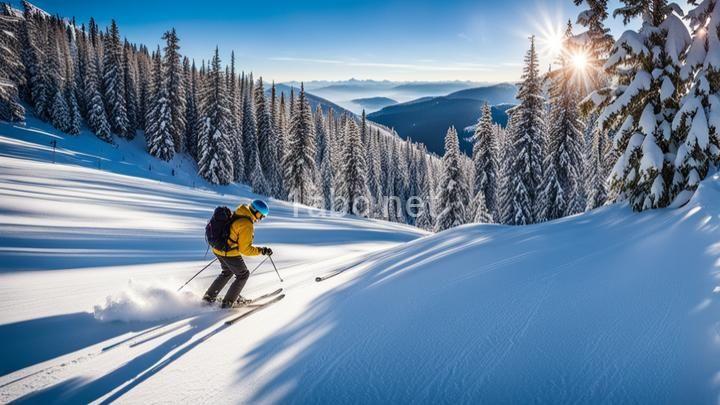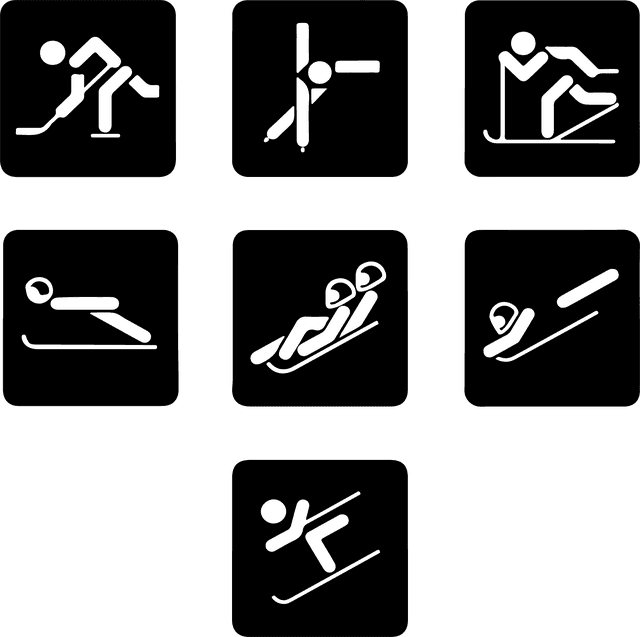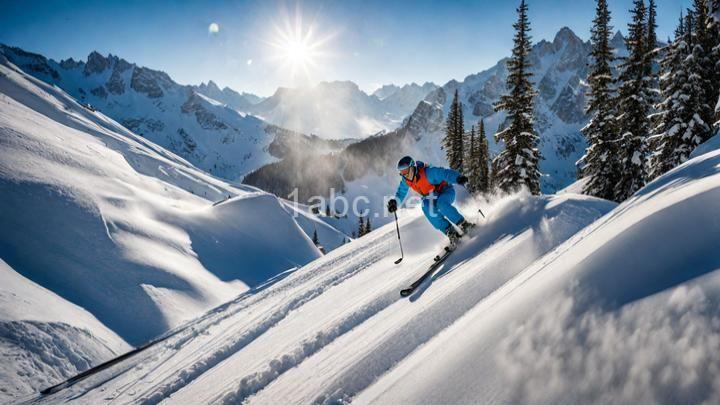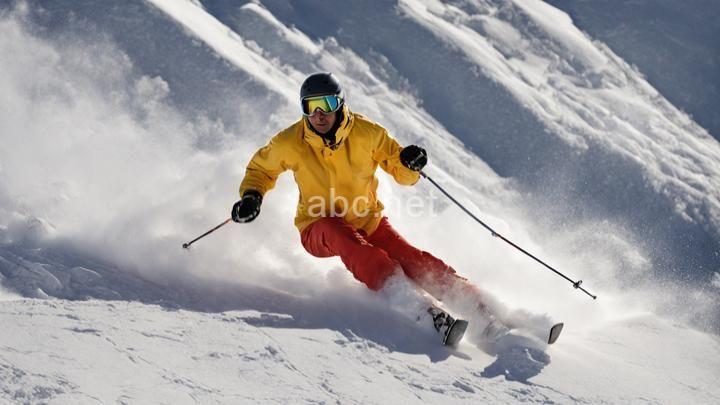From Head to Toe: Protecting Yourself with Proper Skiing Safety Gear
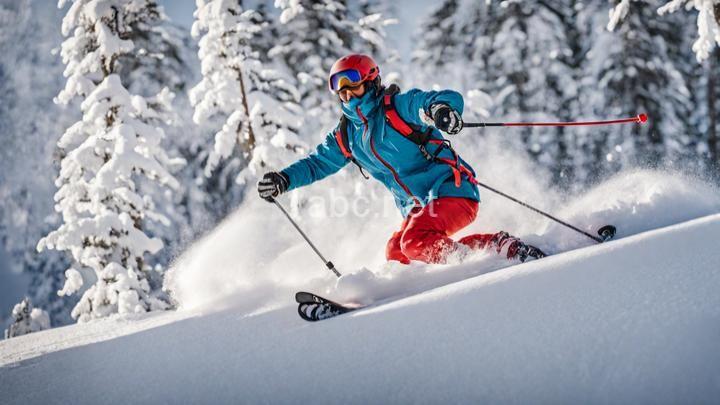
Introduction:
Picture yourself gliding down the slopes, feeling the rush of adrenaline as you conquer each turn. Skiing is an exhilarating sport that allows us to connect with nature and challenge ourselves. However, it's important to prioritize safety while enjoying this thrilling activity. One of the most crucial aspects of skiing safety is wearing the proper gear from head to toe. In this blog post, we will delve into the different types of safety gear and their significance, ensuring that you have the knowledge to protect yourself on the slopes.
I. The Basics: Helmet Safety
Your head is one of the most vulnerable areas while skiing, making helmet safety an absolute must. Wearing a helmet significantly reduces the risk of head injuries, including concussions. When choosing a helmet, there are a few features to consider. Firstly, ensure that the helmet fits properly, snugly hugging your head without any gaps. It should also have proper ventilation to keep you comfortable throughout your skiing session. Look for helmets that comply with safety certifications such as ASTM F2040 or CE EN1077, which guarantee that the helmet meets the required safety standards. Interesting statistics reveal that wearing a helmet can reduce the risk of head injuries by up to 60%. Personal anecdotes from professional skiers who credit their helmets for saving their lives can also drive home the importance of helmet safety.
II. Shield Your Eyes: Goggles and Sunglasses
Protecting your eyes while skiing is crucial, as they are exposed to various elements such as bright sunlight, snow glare, and flying debris. Goggles and sunglasses are the two primary options for eye protection. Goggles are recommended for most skiing conditions as they provide better coverage and prevent snow from entering your eyes. They also offer superior protection against wind, cold, and UV rays. On the other hand, sunglasses are suitable for milder weather conditions or when skiing at lower altitudes. They offer a more stylish option while still providing essential eye protection. When selecting eyewear, it's important to consider factors such as lens type (polarized or photochromic), lens color (for different light conditions), and fit (ensuring they sit comfortably on your face and fit well with your helmet).
III. Guard Your Upper Body: Jackets and Protective Layers
Your upper body needs protection not only from the cold temperatures but also from falls and impacts. A good ski jacket is essential to keep you warm and dry, regardless of the weather conditions. Look for jackets with waterproof and breathable materials to ensure that you stay comfortable throughout your skiing sessions. Insulation is another important factor, as it helps to retain body heat in colder climates. Additionally, consider investing in base layers and mid-layers to provide extra warmth and moisture-wicking properties. These layers will keep you comfortable and prevent overheating or chilling. For those looking for extra protection, back protectors can be worn underneath the jacket to safeguard the spine in case of falls or accidents.
IV. Keep It Covered: Gloves, Wrist Guards, and Hand Warmers
Your hands play a crucial role in skiing, as they maintain balance and control. Therefore, keeping them protected is of utmost importance. Ski gloves are designed to provide insulation, grip, and dexterity. Choose gloves that are waterproof, breathable, and insulated based on the weather conditions you'll be skiing in. For added protection, wrist guards can be worn to prevent wrist injuries, especially for beginners or those who engage in more aggressive skiing styles. Wrist guards offer support and stability to the wrist joint, reducing the risk of fractures or sprains. Additionally, hand warmers can be a useful addition during cold days on the slopes. These small disposable packets generate heat when activated, keeping your hands toasty warm throughout the day.
V. Support from Below: Ski Boots and Socks
Sturdy and well-fitting ski boots are essential for comfort, control, and injury prevention. When choosing ski boots, consider factors such as flex, fit, and customization options. The flex rating determines the stiffness of the boot, with higher ratings being suitable for advanced skiers requiring more responsiveness. The fit should be snug, with no pressure points or excessive movement inside the boot. Customization options, such as heat-moldable liners, can help achieve a perfect fit. In addition to ski boots, wearing proper ski socks is equally important. Ski socks are designed to minimize friction and reduce the risk of blisters. They should be made of moisture-wicking materials to keep your feet dry and warm throughout your skiing adventure.
Conclusion:
As we reach the end of this blog post, we hope you now understand the importance of protecting yourself with proper skiing safety gear from head to toe. Whether it's wearing a helmet to safeguard your head, choosing the right eyewear for optimal vision, donning protective layers for your upper body, or keeping your hands and feet warm and supported, each piece of gear plays a vital role in keeping you safe on the slopes. Remember to prioritize your safety by investing in high-quality gear that meets the necessary safety standards. So, before you hit the slopes, ensure that you have all the essential safety gear in place. Stay safe, enjoy your skiing adventures, and look out for our next blog post on essential skiing accessories to enhance your experience even further!
Word count: 1011 words
FREQUENTLY ASKED QUESTIONS
What is From Head to Toe: Protecting Yourself with Proper Skiing Safety Gear?
"From Head to Toe: Protecting Yourself with Proper Skiing Safety Gear" is a comprehensive guide that emphasizes the importance of wearing appropriate safety gear while skiing. It highlights how wearing the right equipment, including helmets, goggles, gloves, ski jackets, pants, and boots, can ensure maximum protection and prevent injuries on the slopes. Skiing is a thrilling sport, but it also carries some risks. By following the recommended safety measures and investing in high-quality skiing gear, you can enhance your safety and enjoy this exhilarating activity to the fullest.
Why is it important to wear proper skiing safety gear?
Wearing proper skiing safety gear is important for several reasons:
- Protection from injuries: Skiing involves a certain level of risk, and wearing the right gear can help protect you from serious injuries. Equipment such as helmets, goggles, and gloves can reduce the risk of head trauma, eye injuries, and frostbite.
- Increased visibility: Goggles help improve visibility on the slopes by reducing glare from the sun, enhancing contrast, and protecting your eyes from wind and debris. This allows you to see obstacles, other skiers, and changes in terrain more clearly.
- Weather protection: Skiing often takes place in cold weather conditions, and proper gear helps insulate your body and keep you warm. Thermal layers, waterproof jackets and pants, and insulated gloves and boots help to protect against frostbite, hypothermia, and windburn.
- Enhanced comfort and mobility: Wearing comfortable and well-fitted gear allows for better mobility and flexibility while skiing. This ensures that you can make proper movements and maintain balance, reducing the risk of falls and accidents.
- Peace of mind: Wearing safety gear provides peace of mind, allowing you to focus more on enjoying your skiing experience and less on potential injuries. When you feel safe and protected, you can fully immerse yourself in the activity and have a more enjoyable time on the slopes.
Remember, investing in quality skiing safety gear is a crucial part of responsible and safe skiing.
What are the essential safety gear items for skiing?
When it comes to skiing, it's crucial to prioritize safety by wearing the right gear. Here are the essential safety gear items for skiing:
- Helmet: A properly fitted ski helmet is essential for protecting your head in case of a fall or collision.
- Goggles: Ski goggles provide eye protection against the wind, snow, and harmful UV rays. They also enhance visibility in different weather conditions.
- Ski Jacket and Pants: A waterproof and insulated ski jacket and pants will keep you warm, dry, and protected from the cold and wet elements.
- Base Layers: Wearing moisture-wicking base layers, such as thermal tops and bottoms, helps regulate your body temperature and keeps you comfortable throughout the day.
- Gloves or Mittens: Insulated, waterproof gloves or mittens are essential for protecting your hands from cold temperatures and potential injuries.
- Ski Socks: Choose ski-specific socks made from synthetic materials or merino wool to keep your feet warm, dry, and comfortable while skiing.
- Sturdy Ski Boots: Well-fitted and sturdy ski boots provide support and control while skiing, reducing the risk of ankle or foot injuries.
- Back Protector: Some skiers opt to wear a back protector, especially when engaging in more aggressive or freestyle skiing, to protect the spine from impact.
- Knee Pads: For skiers participating in activities like slalom or snow park, knee pads can provide extra protection against falls and impacts.
- Avalanche Safety Gear (Optional): If you plan to ski off-piste or in backcountry areas, consider carrying avalanche safety gear, including a transceiver, probe, and shovel.
Remember, wearing appropriate safety gear is crucial, but it's important to ski within your abilities and always follow safety guidelines and instructions provided by ski resorts.
How can proper skiing safety gear protect me?
Proper skiing safety gear can protect you in several ways:
- Helmet: A helmet is crucial in protecting your head from serious injuries such as concussions or skull fractures in the event of a fall or collision.
- Goggles: Goggles shield your eyes from wind, sun glare, and snow, ensuring clear vision and preventing eye injuries.
- Ski Boots: Well-fitted ski boots provide stability, support, and shock absorption, reducing the risk of ankle or foot injuries.
- Ski Bindings: Properly adjusted ski bindings are designed to release in the event of a fall, reducing the likelihood of knee or leg injuries.
- Protective Clothing: Wearing layers of insulated, waterproof clothing, along with gloves and wrist guards, helps to insulate your body from the cold temperatures and protect against abrasions or fractures during a fall.
- Back Protectors: These specialized pieces of gear offer additional protection to your spine and lower back from potential impacts.
Remember, investing in high-quality skiing safety gear and ensuring it fits correctly are essential steps to ensure your safety on the slopes.
